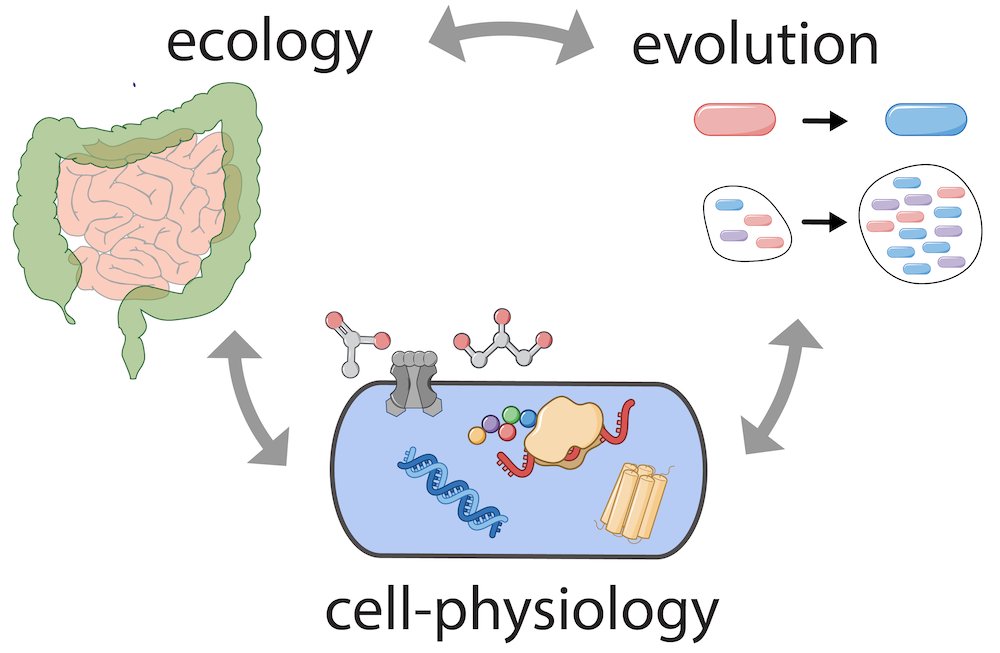Microbial cell physiology
Admittedly, we are a bit obsessed with microbial growth. How do tiny microbial cells harbor thousands of enzymes and coordinate a myriad of processes to replicate and thrive? Can we find in a sea of complexity the essential principles which determine growth? We approach these fundamental questions of systems biology by tightly combining experiments across conditions with mathematical modeling and data analysis. Mostly for Escherichia coli, this wonderfully studied model organism, but increasingly also for other microbes across biological domains.
Microbial life at the triangle of physiology, ecology, and evolution
Our quantitative investigations also go well beyond the cellular level. Integrating ecological and evolutionary considerations, we explore how cell physiological constraints determine adaptation to specific environments and habitats.

The human gut microbiota
We further build on our cell-physiological understanding to better rationalize the composition of the human gut microbiota and its effect on host health. Towards a more mechanistic understanding, we follow quantitative approaches that combine in-vitro experimentation and mathematical modeling to link considerations of cell metabolism, microbial population dynamics, and intestinal physiology.